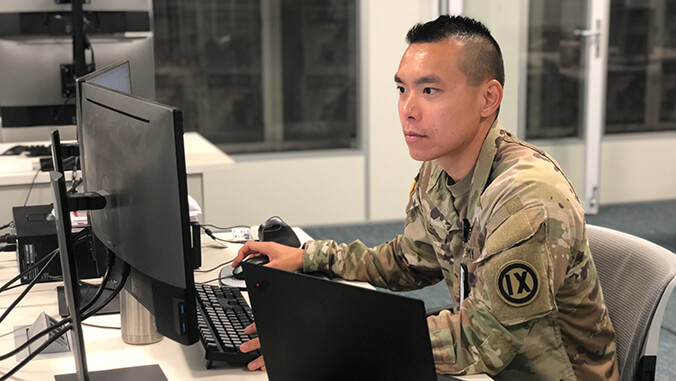
When Hawaiʻi’s government officials and policy makers want to know what lies ahead in the COVID-19 pandemic, they look to University of Hawaiʻi at Mānoa’s Thomas Lee, an assistant professor of epidemiology in the Office of Public Health Studies in the Myron B. Thompson School of Social Work, to provide some answers. In his role as the forecaster and modeler for Hawaiʻi’s response effort, Lee analyzes reams of data and gives state policy makers a picture of what the coming months may hold.
Lee creates epidemiological models of Hawaiʻi’s current COVID-19 infection rate and test results. As part the Hawaiʻi Emergency Management Agency (HI-EMA) COVID-19 Emergency Response Team, Lee synthesizes these models with the latest science on coronavirus transmission rates, population risk factors and the effects of physical distancing to create forecasts of the pandemic’s possible impacts on the state.
“The goal of my work is to provide decision makers in Hawaiʻi with the best available information on the possible future spread and impacts of COVID-19,” Lee said. When he began this work in early April, the urgent focus was to predict infections for the coming days and weeks. Now, as the state looks ahead to opening up, his tasks have shifted to figuring out the outcomes of different scenarios.
Lee is currently figuring out how Hawaiʻi’s case count may change if the state decides to screen all travelers, rather than not screen them. He is working on predicting how many COVID-19 patients may require long-term hospitalization, and at what point it makes sense for the state to create a dedicated skilled nursing facility to care for them. His scenarios on future cases inform HI-EMA’s calculations on how much personal protective equipment Hawaiʻi will need for the second wave of infections.
Lee’s background
Born and raised in Hawaiʻi, Lee is an alumnus of the public health program for which he now teaches.
“The UH Mānoa public health program does a great job in training epidemiologists to be multidisciplinary,” Lee said. Prior to the pandemic, most of his research focused on modeling rates of chronic conditions, such as Alzheimer disease and risk factors for depression.
As a U.S. Army reservist placed on active duty, Lee relies on his military training to understand the logistics and planning aspects of the state’s larger pandemic response effort. His role as HI-EMA‘s forecaster requires not only data analysis skills, but also the ability to engage in communications, education, coordination and planning.
“In the military and public health, I’ve learned to look at problems holistically, and that perspective has certainly been needed in this response effort,” he said.
As part of his work at UH Mānoa, Lee participates with other faculty members in the Hawaiʻi Pandemic Applied Modeling (HiPAM) workgroup. This group includes epidemiologists, data scientists and health care workers, and helps the state in adapting models and other tools for Hawaiʻi’s unique context.
“Thomas has a rare combination of strong scientific and technical expertise in epidemiology, as well as humility and excellent powers of listening and reflection that are the basis of his excellent communication skills,” said Victoria Fan, chair of the HiPAM workgroup and an associate professor at UH Mānoa. “I believe Thomas is instrumental for the Office of Public Health Studies in bridging the gap between the academic and the real world.”
Hawaiʻi moving forward
Lee said that an important part of his work is communicating to policy makers the limitations of the data. “I don’t have a crystal ball,” he said. “My job is to communicate the forecasts along with the assumptions and caveats that we used to develop the forecasts.” Any possible scenario could lead to a range of outcomes, and Lee feels a massive responsibility to explain to policy makers that his models are meant to provide likely outcomes, not definitive answers.
Ultimately, Hawaiʻi’s ability to move forward will depend on each person’s efforts to adhere to the best public health practices, such as maintaining physical distancing and staying informed.
“We all have an impact on how we continue to open up, and how healthy we are as a state,” Lee said. “Everyone has a responsibility to do their best.”

